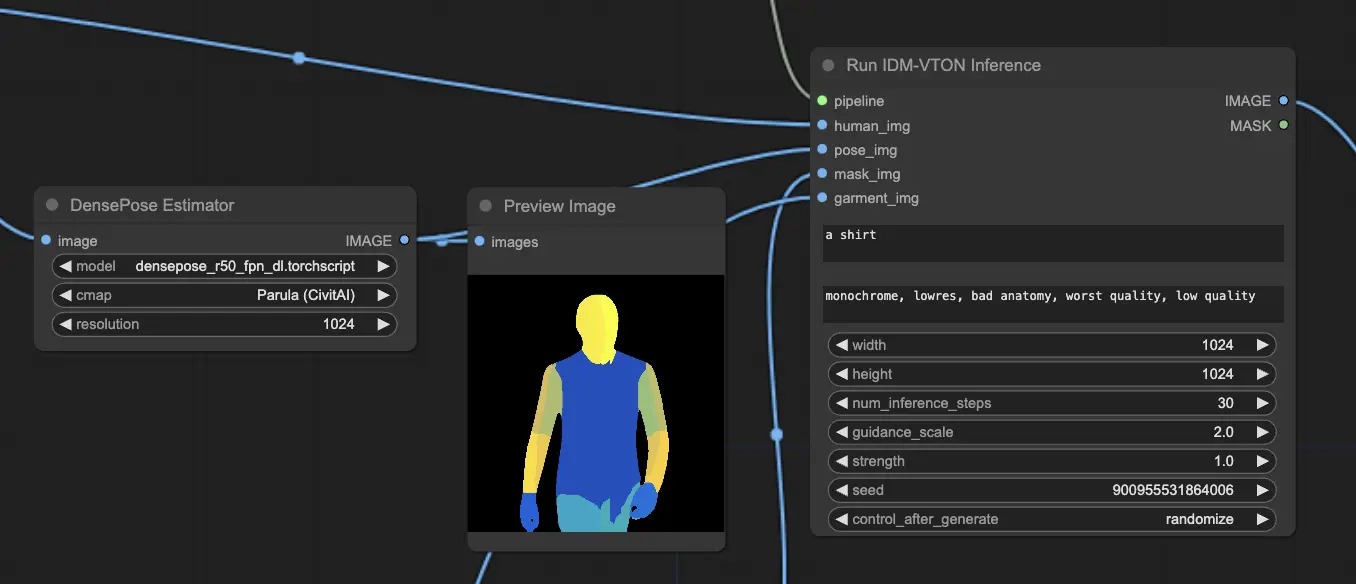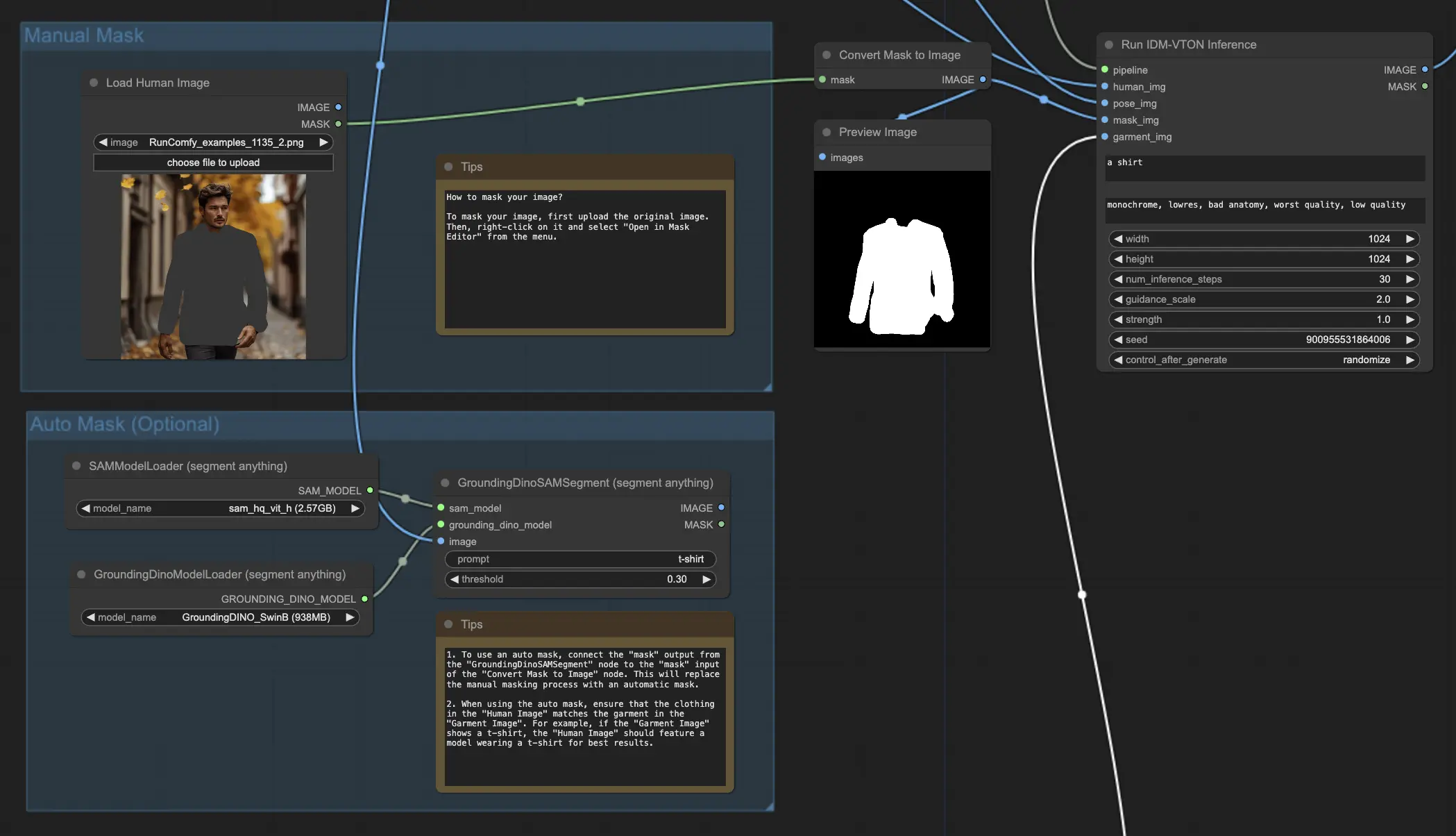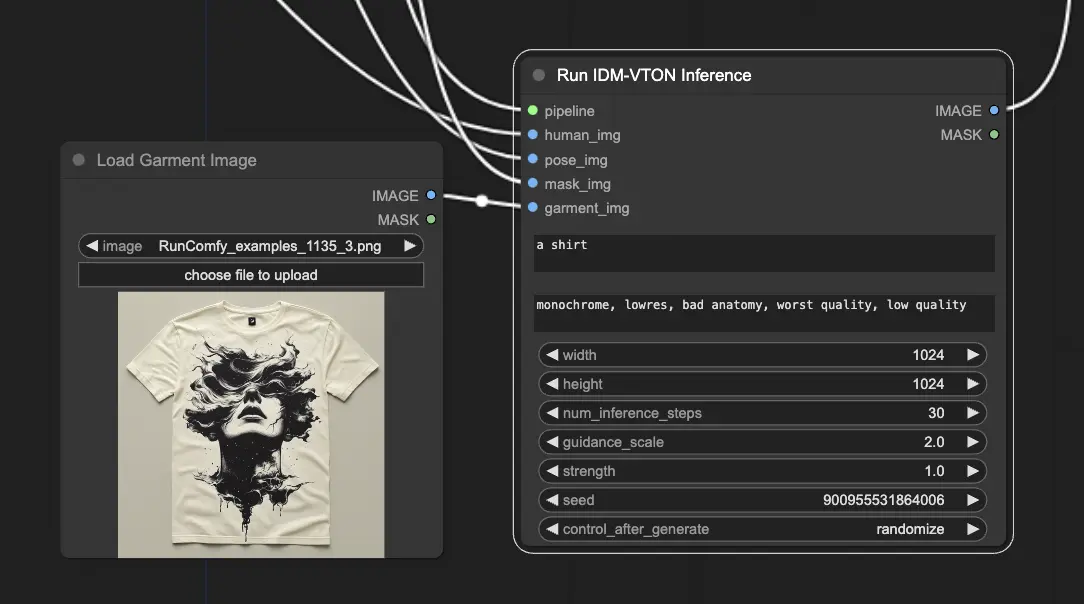IDM-VTON, short for "Improving Diffusion Models for Authentic Virtual Try-on in the Wild," is an innovative diffusion model that allows you to realistically try on garments virtually using just a few inputs. What sets IDM-VTON apart is its ability to preserve the unique details and identity of the garments while generating virtual try-on results that look incredibly authentic.
At its core, IDM-VTON is a diffusion model that's been specifically engineered for virtual try-on. To use it, you simply need a representation of a person and a garment you want to try on. IDM-VTON then works its magic, rendering a result that looks like the person is actually wearing the garment. It achieves a level of garment fidelity and authenticity that surpasses previous diffusion-based virtual try-on methods.
So, how does IDM-VTON pull off such realistic virtual try-on? The secret lies in its two main modules that work together to encode the semantics of the garment input:
But that's not all! IDM-VTON also makes use of detailed textual prompts for both the garment and the person inputs. These prompts provide additional context that enhances the authenticity of the final virtual try-on result.
In ComfyUI, the "IDM-VTON" node is the powerhouse that runs the IDM-VTON diffusion model and generates the virtual try-on output.
For the IDM-VTON node to work its magic, it needs a few key inputs:
To get the IDM-VTON node up and running, there are a few preparation steps:



a. Manual Masking (Recommended)
b. Automatic Masking
Whichever method you choose, the obtained mask needs to be converted to an image using a MaskToImage node, which is then connected to the "Mask Image" input of the IDM-VTON node.

For a deeper dive into the IDM-VTON model, don't miss the original paper, "Improving Diffusion Models for Authentic Virtual Try-on in the Wild". And if you're interested in using IDM-VTON in ComfyUI, be sure to check out the dedicated nodes here. Huge thanks to the researchers and developers behind these incredible resources.
RunComfy is the premier ComfyUI platform, offering ComfyUI online environment and services, along with ComfyUI workflows featuring stunning visuals. RunComfy also provides AI Playground, enabling artists to harness the latest AI tools to create incredible art.